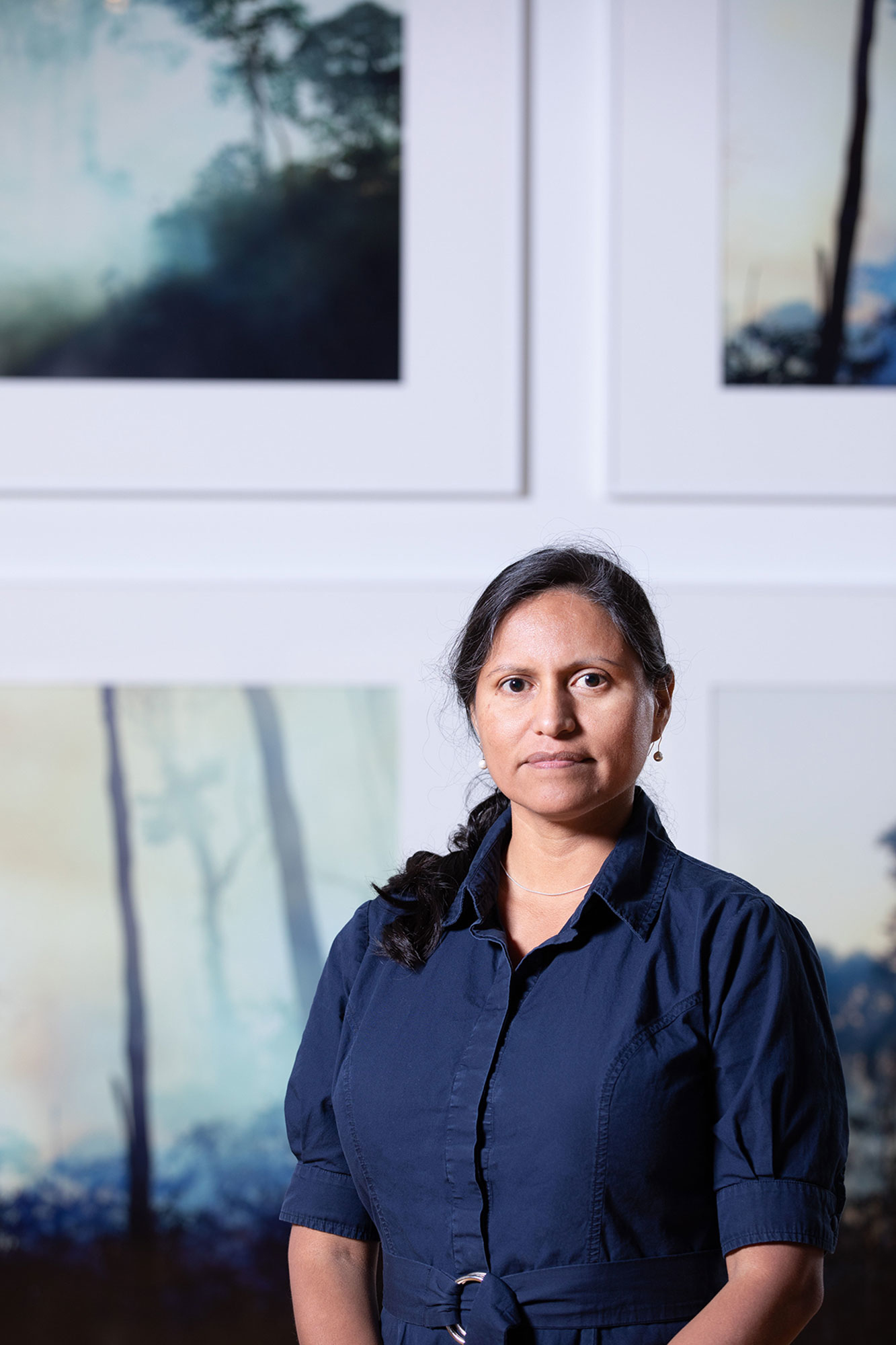 Portrait by Brianne Lehan and Lyon Duong/UF Photography. Artwork: "Paradise on Fire IV, 2007, Paradise on Fire II, 2007, Paradise on Fire I, 2007, Paradise on Fire V, 2007" by UF College of the Arts professor Sergio Vega, courtesy of the artist
Portrait by Brianne Lehan and Lyon Duong/UF Photography. Artwork: "Paradise on Fire IV, 2007, Paradise on Fire II, 2007, Paradise on Fire I, 2007, Paradise on Fire V, 2007" by UF College of the Arts professor Sergio Vega, courtesy of the artist
Assistant professor, Department of Tourism, Recreation & Sport Management, College of Health and Human Performance
By using drones to get a bird’s-eye view of the Amazon and other key conservation areas, she’s helping sustainable tourism gain ground as an alternative to deforestation.
How can unmanned aerial vehicles help slow deforestation?
As co-director of the GatorEye Unmanned Flying Laboratory, Almeyda Zambrano is pioneering a faster way to gather data via 3D drone scans. “Typically, I would ask people about their forest and rely on those answers. But if I can quickly fly over it, I can get gigabytes of data on the quality of that forest — for example, how much carbon is it sequestering, or the area of secondary vs. old-growth forest, which is hard to map via questionnaire. My next step is to compare how ecotourism can result in environmental and social win-wins. The results will help enable long-term sustainability for these enterprises in the global tourism market.”
Why UF?
After getting her master’s degree from UF’s Center for Latin American Studies, Almeyda Zambrano went on to Stanford for her doctorate in anthropology and Harvard for post-doctoral work in sustainability science. “Those are amazing places with lots going on, but in terms of the number of researchers collaborating on interdisciplinary research in the Amazon, I don’t think there’s any place better than UF. Right now, I’m involved in a collaboration among faculty in wildlife, sociology, tourism and forestry. It’s really an outstanding collaborative environment.”
What do you want your students to understand?
“I would like them to see the development and conservation possibilities within the Amazon, including but not limited to tourism. There are many approaches to enhance sustainable development, and the key is to have the tools, the framework, to select from the suite of possibilities those that are most effective, cost efficient, and will result in long-term results. I would like my students to have the broad vision of what’s possible, so if they choose, can be positive players on the global stage.”
What gives you hope?
“The pace of deforestation in the Amazon continues to increase. New political dynamics only give rise to concern. However, there is hope and solutions are possible. I’m collaborating on studies on forest regeneration and recovery of ecosystem services. Another example is Costa Rica, which continues to lead the world for sustainable tourism. It’s by no means perfect, but working in areas that are leading as positive examples gives me hope for areas such as the Amazon frontier.”
What can we do?
“If you’re looking to have an adventurous vacation, I would definitely encourage you to look into certified sustainable hotels where you can get an authentic experience and support conservation as well as families at the same time. National Geographic also has compiled a list of unique lodges of the world. I hope to continue visiting these locations, as each presents an example of success in widely varying social, economic and ecological landscapes.”
This is part of a series highlighting people at the University of Florida working to protect our well-being and the health of the planet, paired with works from the Harn Museum of Art exhibition “The World to Come: Art in the Age of the Anthropocene.” See more at ufl.to/theworldtocome.